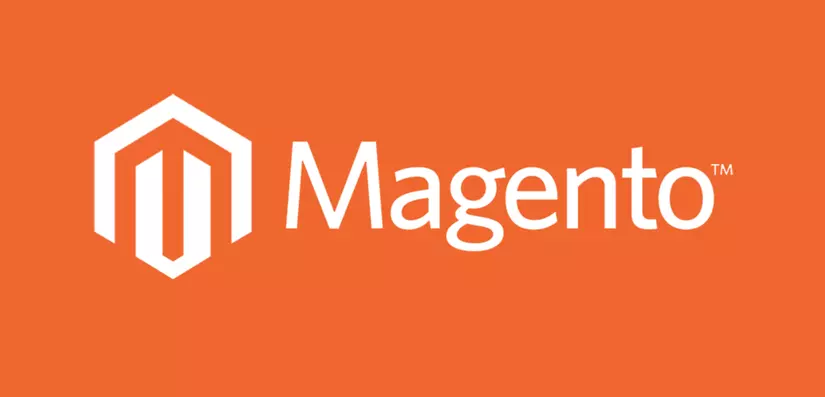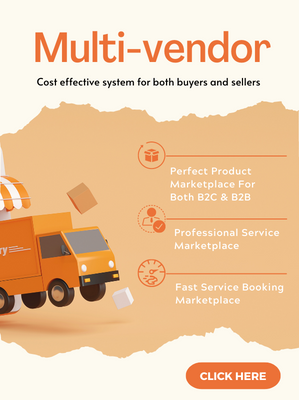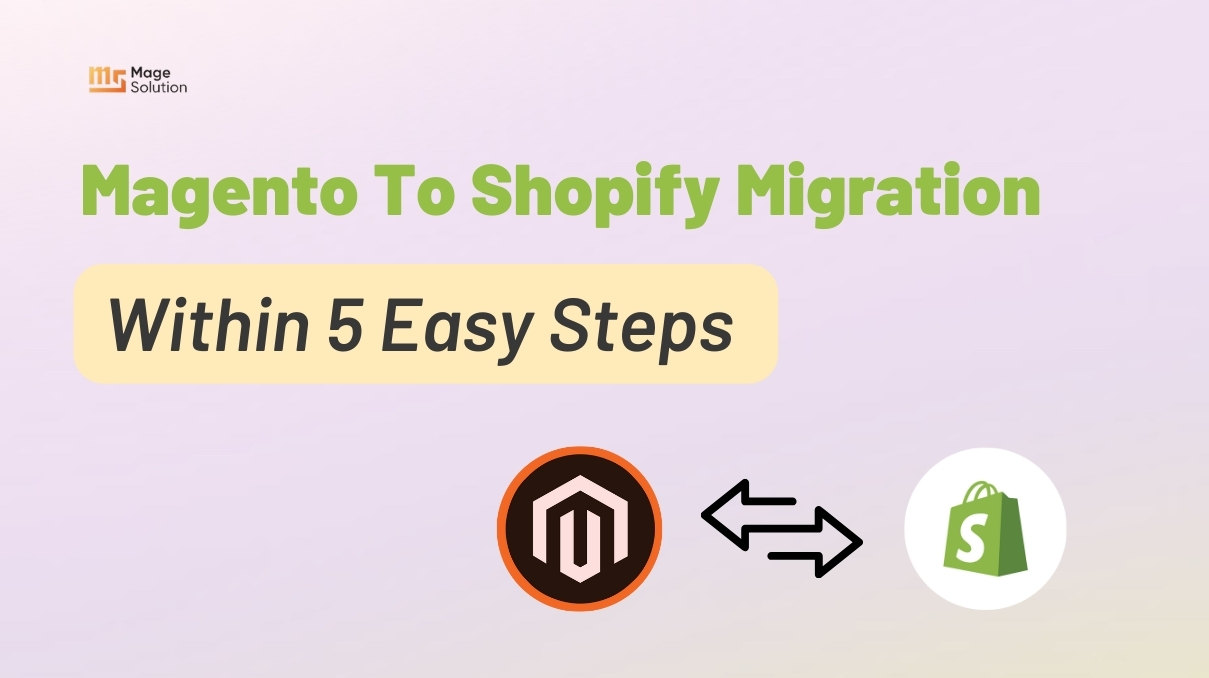Your cart is currently empty!
Magento vs Woocommerce: Which is the best ecommerce platform for you? (Update 2022)
Choosing a suitable platform for an online store has never been an easy task for an e-commerce business owner. If you are looking for a self-hosted e-commerce platform that allows you to unleash the full potential of your online store and manage everything in the store site, WooCommerce and Magento are the great choices for you. However, the question is, which platform is most suitable for your e-commerce site? Just spending a little bit of time reading this article, you will know which solution is right for you.
Overview Features of Magento vs Woocommerce
|
WOOCOMMERCE |
MAGENTO |
| Completely free platform. | Provides both a free Community edition and a number of paid services. |
| Requires you to find your own web host. | Although the Community edition is self-hosted, their premium packages include hosting. |
| Supports unlimited products. | Allows you to add unlimited goods. |
| Supports nearly all WordPress themes, and offers a myriad of customization options. | It has a theme-based system with a good variety of options. |
| Comes with an extension system and hundreds of options. | Supports extensions and provides a large choice of them. |
| Includes basic security features to protect your store. | Advanced security features are available, as well as specific updates to address any vulnerabilities that may occur. |
| The platform is remarkably easy-to-use. | Recommended for people with (at least) a basic understanding of web development. |
Magento
Magento has maintained a strong reputation. It was founded on August 31, 2007. Moreover, it has since published several versions and product upgrades. Magento clients account for 700,000+ websites, with 180,000+ live Magento websites, according to Builtwith.
Magento has a number of strong qualities that make it ideal for growing a successful business. Out-of-the-box features, customizability, and simple third-party integrations are among them. Magento is an incredibly powerful software that has both a free Open Source edition and an even more powerful Enterprise edition that you can either self-host or use as a cloud edition via Magento itself. Magento is by far the most powerful SMB eCommerce platform on the market and powers both small business websites and very large eCommerce websites.

The biggest difference between Magento and WooCommerce is that Magento is feature-packed with many eCommerce features that WooCommerce lacks, making it a far more powerful solution. However, due to being such a large application, it is often a more costly software to maintain and develop on. The biggest weakness of Magento is that it is not a strong CMS compared to WooCommerce which is built on top of WordPress. Sometimes businesses integrate WordPress into Magento to make up for this issue.
Latest Update: We’ve just released the version 2.0 of Claue Multipurpose Magento 2 Theme, with with a bunch of performance improvements and exclusive features. Check this theme out now: Claue Magento Theme 2. 0
Claue – Clean, Minimal Magento 2&1 Theme is an excellent template for a modern and clean eCommerce store with 40+ homepage layouts and tons of options for shop, blog, portfolio, store locator layouts, and other useful pages. Claue version 2. 0 comes with a bunch of exclusive features including:
- Being based on Luma theme.
- Meet all standards of Magento Theme
- Significant performance improvement
- Compatible with most third-party extensions.
- Fully compatible with Magento 2.4.x

This second advanced version completely differentiates from its previous one. Thus, if you are using Claue version 1 and want to update to Claue version 2, you can only rebuild a new website rather than update from the old version. Now, let’s get back to the main topic.
Strengths:
- Enterprise-focused with incredible scalability
- Multiple versions with Enterprise, Open Source, Cloud, and other products
- Huge community of quality developers and high-quality agencies
- A large amount of out of the box functionality
- eCommerce first product unlike WordPress with WooCommerce
- MVC framework for scalability
- Strong B2B eCommerce capabilities
- Multistore out of the box
- Strong product data capabilities for large and complex catalogs
- Robust Order Management
- More advanced payment and shipping capabilities
- More robust promotion capabilities
Weaknesses:
- Typically higher cost of ownership
- Larger learning curve to use
- Weak CMS capabilities for content-heavy sites
- Larger applications with higher maintenance overhead typically
- Most extensions cost money
- Frontend theming is more complicated
- Hosting is fairly costly
Price:
Because Magento’s Community Edition is open-source and free to use, your expenses will be determined by your existing hosting provider. Users who want to utilize the Enterprise Edition, on the other hand, will have to pay a lot of money.
Is it appropriate for beginners?
When comparing WooCommerce versus Magento, Magento doesn’t appear to be as beginner-friendly out of the box. Users may overcome this by consulting the comprehensive documentation – and those who persevere will get additional benefits from the platform. It’s ideal for ambitious users that want to fast develop their businesses while still taking the time to learn the platform.
2. WooCommerce

WooCommerce features and usages
WooCommerce is a great plugin for WordPress and is actually the most used eCommerce platform by sheer numbers. It is a very useful tool because it is actually a plugin for WordPress so you can use the benefits of WordPress and the additional eCommerce capabilities of WooCommerce. WooCommerce itself is a pretty lightweight eCommerce platform so it’s great for simpler eCommerce sites that also have a large content need.
WooCommerce relies on a lot of plugins in many cases because the core WooCommerce plugin is pretty limited. This is where WooCommerce can become difficult to scale in that you may need many plugins to achieve the desired functionality and eventually maintaining all these plugins together will become quite cumbersome. Additionally, the catalog and order management capabilities of WooCommerce are fairly limited.

WooCommerce vs Magento: the CMS battle
Strengths:
- A plugin for WordPress (You get the value of WordPress CMS)
- Typically lower cost of ownership
- Easy to get started with
- Lower learning curve
- Works well with content-focused sites that can leverage WordPress CMS capabilities
- The large amount of themes to choose from
- Great for sites selling content like eBooks, podcasts, etc
- Many free plugins are available
- Cheaper to host in most cases
- Largest open source community and user base of any platform

The power of WooCommerce CMS platform
Weaknesses:
- Weak database architecture for high order volume and scalability
- Often requires many additional plugins to achieve ideal functionality which can lead to version conflicts and bugs
- Minimal out-of-the-box features
- Weak product data capabilities for large and complex catalogs
- Only one version of WooCommerce (no enterprise edition)
- Tough to scale for larger sites
- Many bad developers and agencies build buggy sites
Price:
This is a completely free platform that anybody may download and install on any host. However, its premium extensions are generally costly, and some require annual subscriptions. Besides that, the cost of web hosting is totally dependent on the size of your business. Moreover, the packages offered by your provider.
There are several good web hosting that function well with WooCommerce. However, SiteGround and InMotion are the ones we always suggest to our customers. Both are available for roughly $5-9 per month
Is it appropriate for beginners?
WooCommerce is a great choice for users who have no prior e-commerce expertise, and it’s even better if they’ve previously used WordPress. WooCommerce’s great documentation and plenty of online training will appeal to even those who haven’t used it before.
Magento vs Woocommerce: Security
You may use WooCommerce and Magento to build a variety of sophisticated security features. However, mostly extensions and manual adjustments are used. While no platform can be completely safe, Magento takes the lead in this area by providing users with specific security fixes.
The disadvantage is that Magento security fixes are difficult to install. Newcomers to e-commerce may feel out of their depth if they try it on their own. As a result, a large number of Magento stores are out of date.
Nonetheless, if you value security and have some web development skills (or are willing to pay for it), Magento is the clear winner.
Magento vs Woocommerce: Product management
With choices for both physical and digital items, WooCommerce is a simple way to product management. It’s very easy to add new products, especially if you’re already comfortable with WordPress. Furthermore, you can always use extensions like Product Add-Ons to extend the platform’s capabilities.
Magento, on the other hand, comes with a number of capabilities that WooCommerce does not, all without the need to purchase extra extensions. Product reviews, grouped goods, wish lists, sophisticated pricing rules, and product personalization, for example, are all supported. It definitely has a practical benefit, but it also comes with a higher learning curve.
Magento vs Woocommerce: Pricing
When picking between WooCommerce and Magento, the final factor to consider is your budget. WooCommerce is, as mentioned above, entirely free. Magento, on the other hand, only has a free Community edition and a number of paid services. Unfortunately, the only way to get prices for Magento’s premium solutions is to interact with their sales team.
Even though both platforms are basically free, if you rely too much on extensions, fees can rapidly add up. There are many free Magento and WooCommerce extensions available. However premium extensions may be quite costly.
Overall, WooCommerce and Magento are fantastic alternatives for low-cost online retailers. But the latter is only available in its Community edition. As your business grows, WooCommerce remains the most cost-effective option. Because you won’t need to install more sophisticated (and expensive) versions of the platform, as you could with Magento.
Because more and more providers are learning how to optimize their systems for WordPress these days, hosting a WooCommerce store is going to be cheaper and easier. As previously stated, a good host, such as SiteGround, may be had for roughly $7.95 per month (our top recommended host).
Taking your business to the high level with Magesolution
Picking a winner between WooCommerce vs Magento wasn’t easy, since no single platform will fit the needs of every user perfectly. While some of you may agree with our decision to pick WooCommerce, others may find themselves more at home with Magento. You’ll need to take into consideration several criteria including performance, security, product management, and your overall budget – along with your own unique needs. We – MageSolution offers Magento Development Packages that will help you build your store with ease. For more information, let us know via CONTACT FORM.



